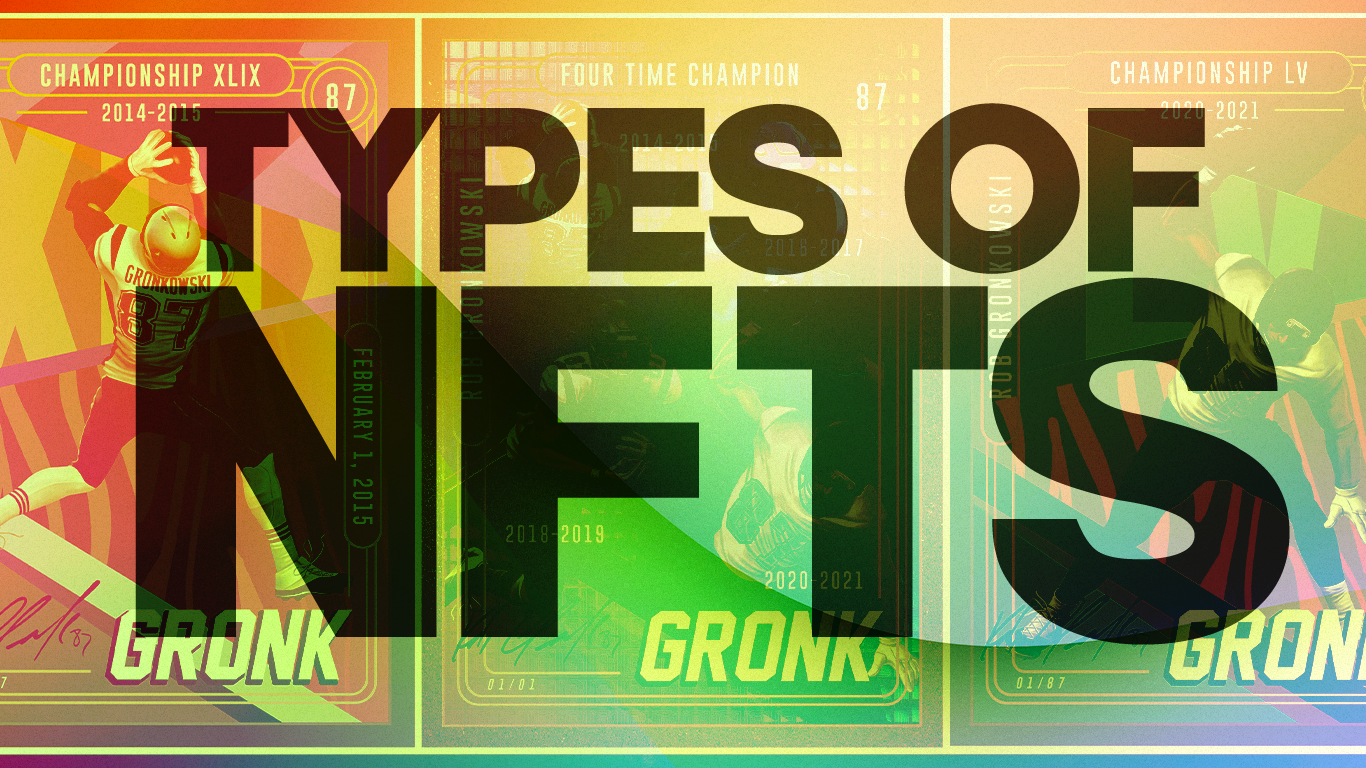The different types of NFTs today can vary quite a lot, and it’s been proven that almost anything can be minted and sold as an NFT. Just recently a house in Columbia, South Carolina sold as an NFT for $175,000 making it the first-ever real estate asset to be sold as an NFT.
In this article, we’ll go over the different types of NFTs and how they all play a role in the future of digital ownership.
1. Artwork
Artwork is the best-selling type of NFT in today’s market, which is largely due to the fact that it is the most popular NFT form amongst collectors and has one of the highest perceived values. NFTs have provided a new avenue and opportunity for artists to sell their art online in a way that benefits them. And as it stands, the most valuable and expensive NFTs ever sold are art pieces.
An artist by the name of Pak sold their piece ‘The Merge’ for an astronomical price of $91.8 million making it the most expensive NFT ever sold. The piece had 28,983 collectors who pooled their resources to pay for this NFT.
In addition, video art can be minted into NFTs. In recent years, we have seen NFT collectors pay huge amounts for short video and GIF NFTs. Notably, a looping 10-second video called ‘Crossroad’ by digital artist Beeple is in a top ten list of the most valuable NFTs ever, having sold for $6.6 million.
2. Music
Music is another form of NFT that has been gaining some traction lately. Ordinarily, artists and DJs share their music via records, cassettes, CDs, and digital platforms. However, they can now sell their musical compositions as NFTs, earning a good amount of money in the process.
A good example of music NFTs is a project called Blocktones, which is a collection of 2500 generative audio NFTs where collectors gain full IP rights to the music behind them.
3. Video Game Items
Video game items can also be minted and sold as NFTs. Of course, game companies can not exactly sell full games as NFTs. But, they can sell in-game items, such as skins, characters, and other features.
Unlike DLC (downloadable content) assets, a video game NFT asset is unique and exclusive to a sole buyer. Some game developers sell regular DLCs while also selling a limited edition of the content as an NFT.
4. Trading Cards/ Collectibles
Digital trading cards on the NFT market are just like conventional trading cards. For example, limited edition baseball cards sell for thousands of dollars, and the same goes for virtual (or NFT) versions of these trading cards.
More and more sporting companies are moving towards digital forms of collectables as opposed to physical ones. The Australian Football League (AFL) recently issued their first NFT trading card collection called the ‘Ripper Skipper’, following in the footsteps of the NBA and the UFC.
5. Big Sports Moments
Short clips of huge sporting moments, such as game-winning three-pointers or stoppage-time winners, can be sold as NFTs. Surprisingly, despite their brief duration, these clips are fetching hundreds of thousands of dollars on the NFT market.
6. Memes
Memes can also be traded as NFTs. And these digital assets are valuable, with popular memes such as Bad Luck Brian, Disaster Girl, and Nyan Cat fetching between $30,000 and $770,000. The most valuable meme NFT ever sold is the Doge meme, which sold for a whopping $4 million.
7. Domain Names
Ordinarily, you will need to pay a third-party company to operate your domain name. However, since people now register and sell domain names on the NFT market, you can buy one there. The best part is that you can claim exclusive ownership of the domain name without the involvement of any third party.
ENS or Ethereum Name Service domains are among the most popular to collect with over 2.7 million registered so far.
8. Redeemable Assets
Redeemable NFTs combine the physical and digital world allowing users who purchased NFTs to redeem a physical item along with their NFT.
In recent news, Azuki NFT auctioned off 8 24-karat golden skateboards as NFTs that were claimable for the real-life item. The NFT works as a physical backed token that links to the skateboard through an embedded chip.
9. Subscriptions
Subscription-based models have been around since the early ages of the internet and have now moved into NFTs. Traditionally with subscription models, a user will have to pay a monthly (or yearly) fee to have access to a specific service that is being provided. With NFTs, users can buy access to these services for a one-off cost, and ownership can be verified over the blockchain acting like an access token to a paywall.
Doing this also allows users to re-sell their subscriptions and for companies to limit the number of subscriptions available to purchase.
10. Exclusive Access
Exclusive access NFTs work in a similar fashion to subscription-based NFTs where if a user is in possession of an NFT it can be verified to gain access to exclusive content. This can be access to events, private Discords or channels, behind-the-scenes content, or pre-access spots to upcoming mints or drops.








